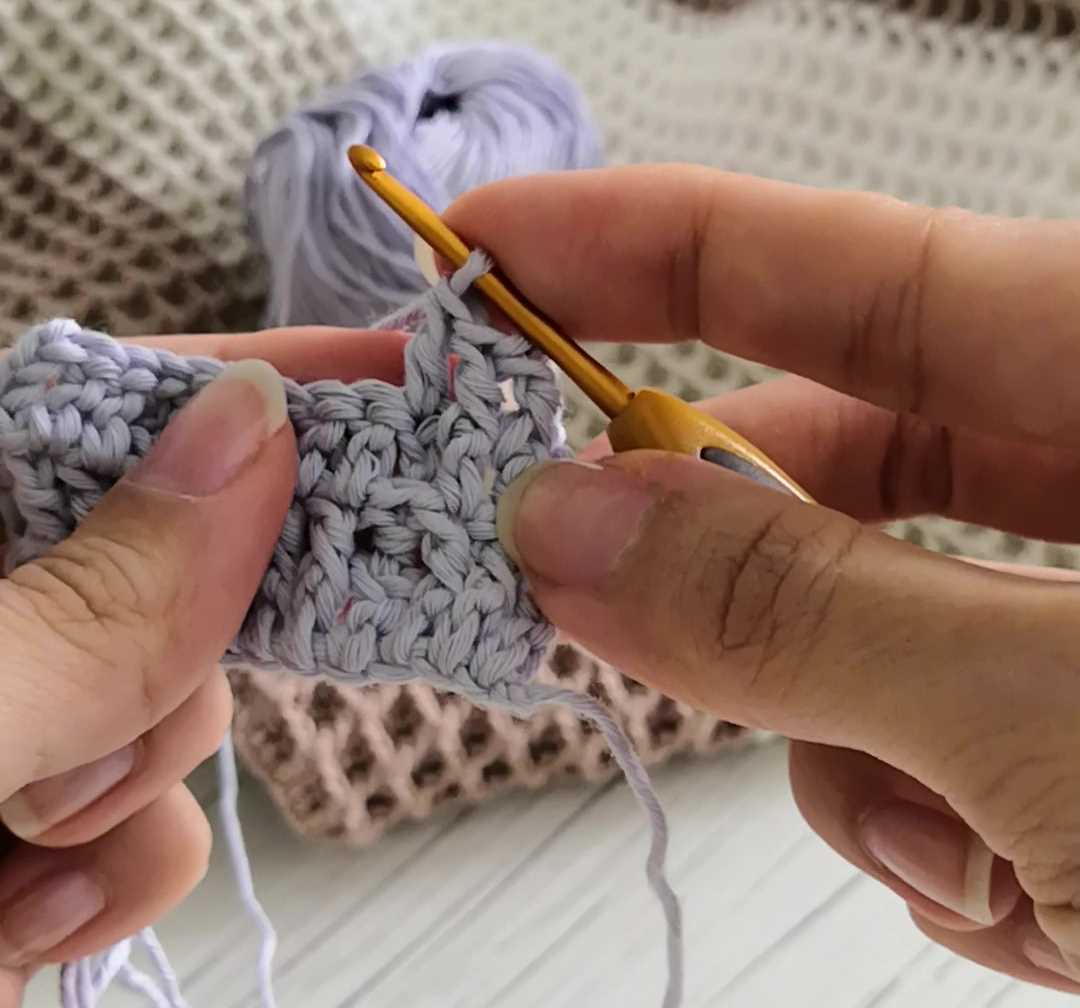
When it comes to knitting, there are countless stitches and patterns to choose from. One popular option for creating cozy and textured fabrics is the waffle pattern. This technique, also known as honeycomb stitch or raised square stitch, adds depth and interest to any knitted project.
The waffle pattern is characterized by its distinctive raised square texture, which resembles the pattern on a waffle. This unique design is achieved by alternating knit and purl stitches in a specific sequence. The result is a fabric that is not only visually appealing but also has a lovely drape and an extra layer of warmth.
Waffle pattern knitting is versatile and can be used for a variety of projects, from scarves and blankets to sweaters and hats. It is especially popular for items that require extra insulation, such as winter accessories or home decor items. The dense texture of the waffle pattern is not only visually striking but also provides additional warmth and comfort.
Whether you’re a beginner or an experienced knitter, the waffle pattern is a great choice for adding texture and dimension to your projects. In this article, we will explore different variations of the waffle pattern, explain how to create the stitch, and provide tips and tricks for knitting with this versatile pattern. So grab your knitting needles and get ready to dive into the world of waffle pattern knitting!
What Is Waffle Pattern Knitting and How to Create It
If you’re a fan of knitting and looking to try out a new pattern, then the waffle pattern might be just what you’re looking for. The waffle pattern is a textured stitch that resembles the pattern of a waffle. It creates a three-dimensional fabric with a raised, square-like texture. This pattern is not only visually appealing but also provides warmth and comfort to your knitted projects.
To create the waffle pattern, you’ll need a basic understanding of knitting stitches such as knit and purl. The key to achieving the waffle texture is alternating between knit and purl stitches in a specific pattern. Here’s how you can get started:
- Start with a multiple of four stitches, plus an additional four stitches for the sides.
- Row 1: Knit all stitches.
- Row 2: Purl all stitches.
- Row 3: Knit the first two stitches, then *purl two stitches, knit two stitches*. Repeat * to * until the last two stitches, then knit those two.
- Row 4: Purl the first two stitches, then *knit two stitches, purl two stitches*. Repeat * to * until the last two stitches, then purl those two.
- Repeat rows 1-4 until you’ve reached your desired length.
When working on the waffle pattern, it’s important to maintain an even tension. Pay attention to your gauge to ensure that the texture remains consistent throughout your knitting. You can experiment with different yarn weights and needle sizes to achieve different variations of the waffle pattern.
Once you’ve mastered the basic waffle pattern, you can incorporate it into various knitting projects, such as scarves, blankets, or even sweaters. The waffle pattern adds a unique touch to any knitted item, making it a versatile and fun stitch to work with.
What is waffle pattern knitting?
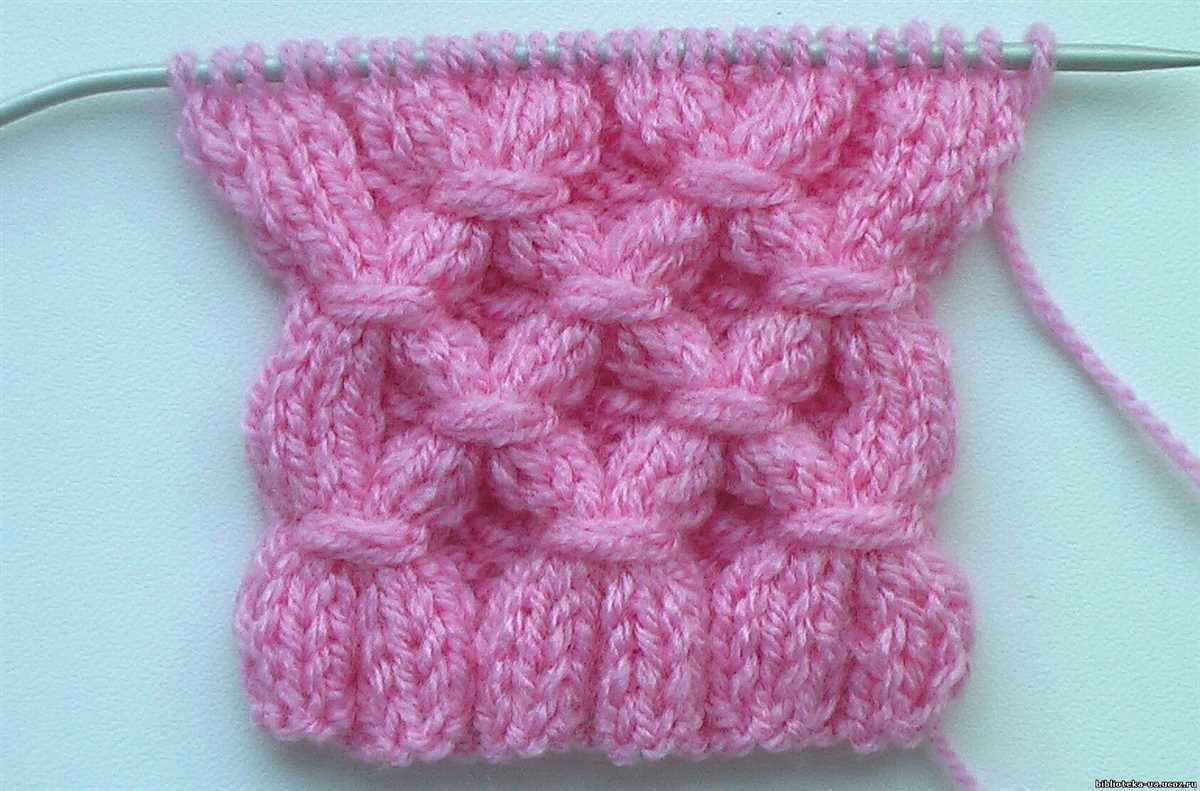
Waffle pattern knitting is a type of textured stitch pattern that creates a raised, waffle-like design on knitted fabric. It is often used in sweaters, blankets, and accessories to add visual interest and depth to the finished piece.
The waffle pattern is achieved by alternating knit and purl stitches in a specific sequence. This creates a grid-like pattern with small squares, resembling the texture of a waffle. The alternating stitches create a play of light and shadow, adding dimensionality to the fabric.
To create a waffle pattern, you typically start with a multiple of 4 stitches. The pattern is worked over rows, with each row repeating a set of knit and purl stitches. This repetition and the texture created by the pattern make waffle pattern knitting a great choice for beginner knitters looking to practice new stitch techniques.
- The waffle pattern is versatile and can be adjusted to create different effects by changing the size of the squares.
- It works well with a variety of yarn weights and fiber types, allowing for endless possibilities in terms of design and texture.
- The waffle pattern can be used on its own for an all-over textured fabric, or combined with other stitch patterns for unique combinations.
- Overall, waffle pattern knitting is a fun and rewarding technique that adds a touch of texture and style to any knitting project.
How to create waffle pattern knitting
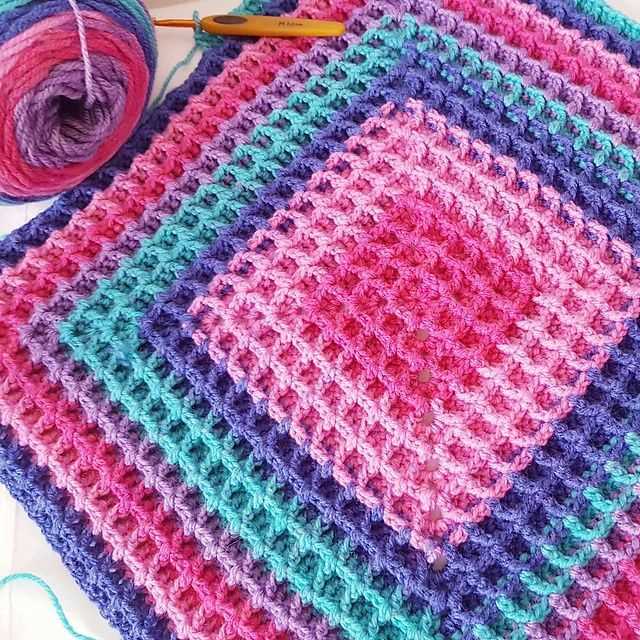
Waffle pattern knitting is a popular technique that creates a textured, honeycomb-like pattern in your knitting. This pattern is achieved using a combination of knits and purls, and can be used to add interest and depth to your knitting projects. Here’s how you can create the waffle pattern:
1. Cast on an even number of stitches
To begin, cast on an even number of stitches onto your knitting needle. The number of stitches will depend on the size of your project and the desired width of the waffle pattern. Make sure to leave a long enough tail for weaving in later.
2. Knit the first row
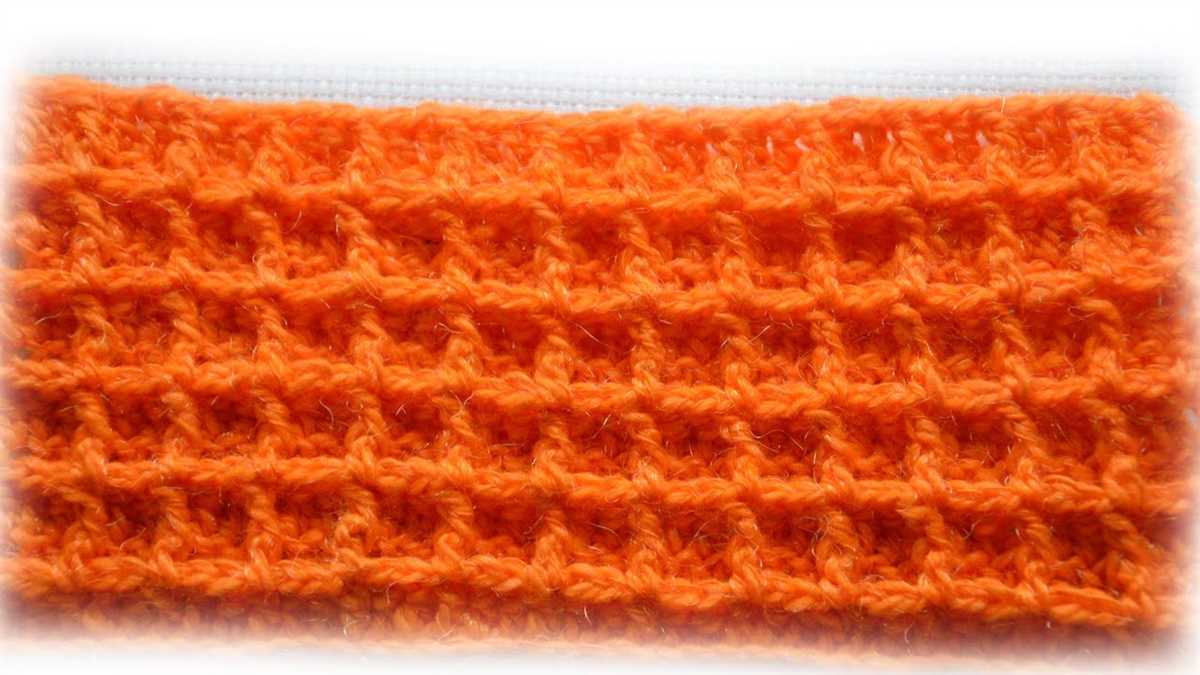
Start by knitting the first row. This will create a smooth, flat base for the waffle pattern. Remember to keep your tension even and consistent throughout.
3. Begin the waffle pattern
For the second row, you will begin the waffle pattern by alternating between a knit stitch and a purl stitch. Repeat this pattern across the entire row until you reach the end.
4. Continue the waffle pattern
Now that you have established the waffle pattern, continue repeating the alternating knit and purl stitches for each row. This will create the textured, honeycomb-like pattern that gives the waffle pattern its distinctive look.
5. Finish off your project
Once you have finished knitting your desired length or completed the pattern, it’s time to bind off your stitches. Use a suitable bind off method to ensure a neat and secure edge.
By following these steps, you can create a beautiful waffle pattern knitting that adds a unique touch to your projects. Experiment with different yarn weights and needle sizes to achieve different variations of the waffle pattern. Happy knitting!
Benefits and Uses of Waffle Pattern Knitting
Waffle pattern knitting is a versatile and popular knitting technique that creates a textured fabric resembling the pattern of a waffle. This unique pattern is achieved by alternating knit and purl stitches in a specific sequence, resulting in a fabric that has a cozy and three-dimensional look.
One of the main benefits of waffle pattern knitting is its ability to create a fabric with excellent insulation properties. The textured pattern creates small pockets of air, which trap heat and provide warmth in cold weather. This makes waffle pattern knitted items ideal for winter accessories such as scarves, hats, and mittens.
Texture and Absorbency
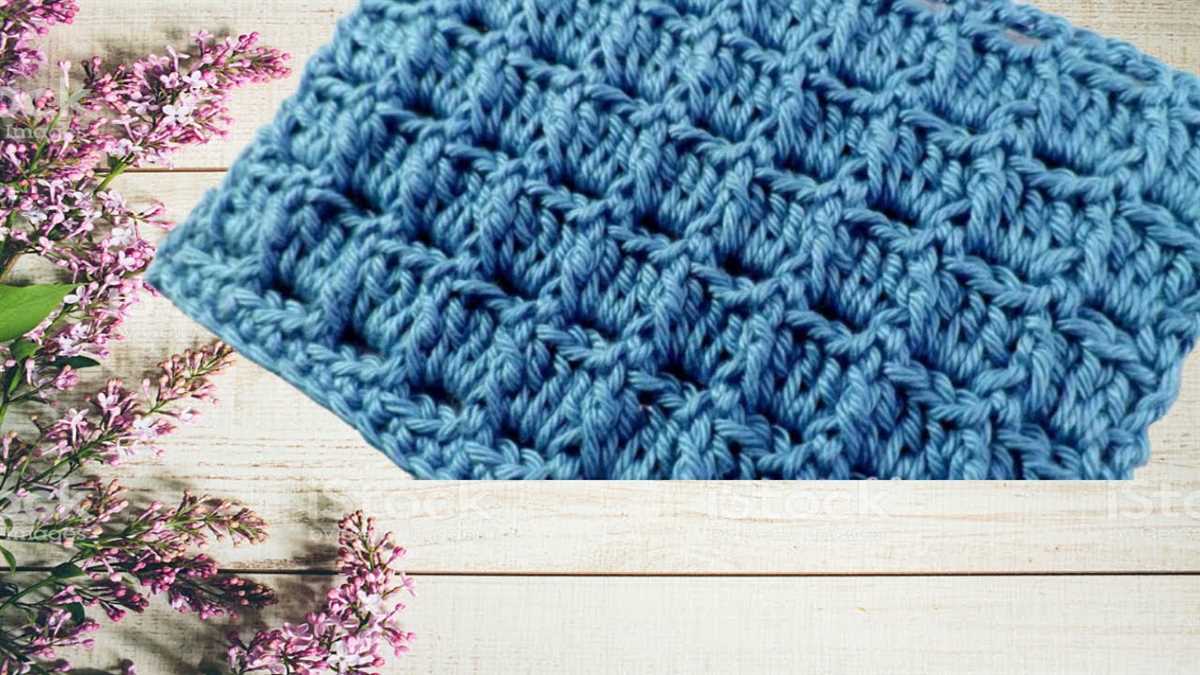
The waffle pattern also creates a textured surface that is not only visually appealing but also has practical uses. The raised waffle squares can provide extra grip and traction, making waffle pattern knitted items like dishcloths and pot holders ideal for handling hot objects in the kitchen. Additionally, due to the textured surface, these items have increased absorbency, making them efficient at soaking up spills and drying dishes.
Stretch and Flexibility
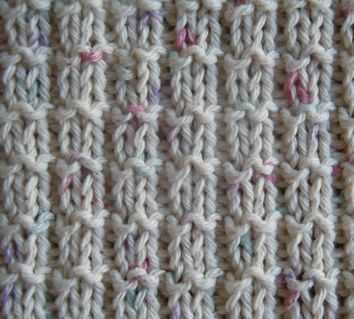
Another advantage of waffle pattern knitting is its ability to create a stretchy and flexible fabric. The alternating knit and purl stitches give the fabric elasticity, allowing it to stretch and conform to different shapes and sizes. This makes waffle pattern knitted garments, such as sweaters and socks, comfortable to wear and easy to move in.
- Insulating properties for warmth
- Textured surface for extra grip and absorbency
- Stretch and flexibility for comfortable garments
- Versatility in various knitting projects
In conclusion, waffle pattern knitting offers a range of benefits and uses. Whether you want to create warm winter accessories, practical kitchen items, or comfortable garments, the waffle pattern technique provides texture, insulation, absorbency, and stretch to make your knitting projects stand out.
Benefits of Waffle Pattern Knitting
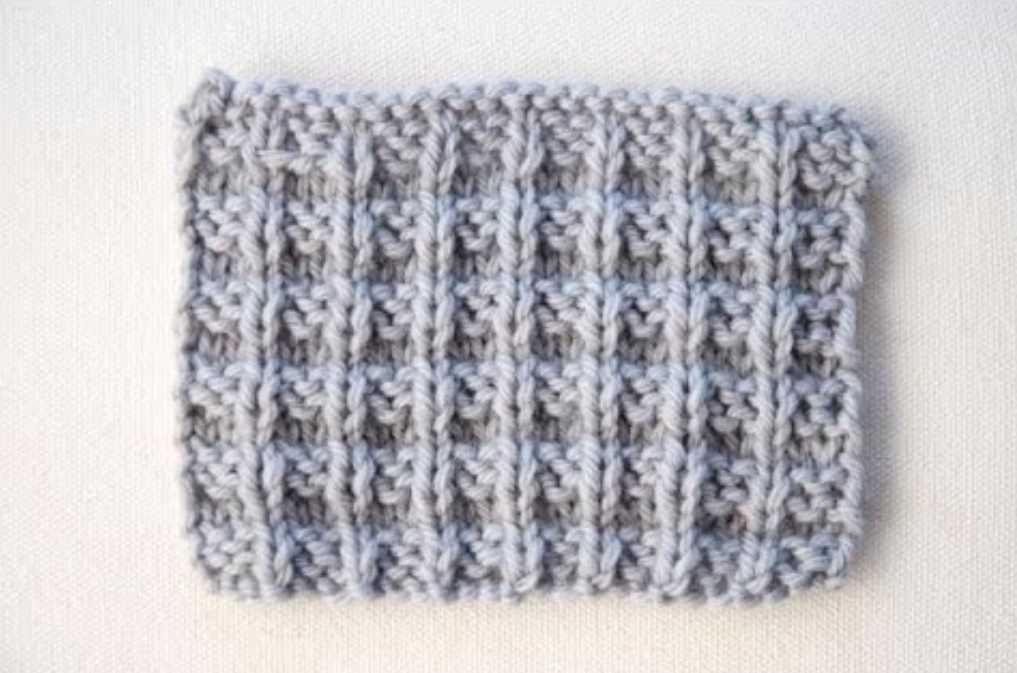
Waffle pattern knitting is a versatile and popular technique that offers several benefits to knitters of all skill levels. Whether you’re a beginner or an experienced knitter, incorporating the waffle pattern into your projects can bring added depth and texture to your work.
One of the key benefits of waffle pattern knitting is its ability to create a thick and cozy fabric. The raised ridges and divots of the waffle pattern create extra insulation, making it an ideal choice for cold weather accessories such as scarves, hats, and blankets. The texture of the waffle pattern also adds visual interest to any project, giving it a unique and eye-catching appearance.
The waffle pattern is also highly versatile, lending itself well to a wide range of projects. From sweaters and cardigans to dishcloths and baby blankets, the waffle pattern can be adapted to suit any item. Its repetitive nature also makes it an excellent choice for mindless knitting, allowing you to relax and enjoy the process without having to constantly refer to a pattern.
Furthermore, the waffle pattern is a great way to experiment with different yarns and colors. The ridges and valleys of the pattern create natural stripes, making it easy to incorporate multiple colors into your design. You can play with different types of yarn, from chunky to fine, to achieve different effects and textures. The waffle pattern also offers opportunities for customization, as you can easily alter the size and dimensions of the waffle squares to suit your preferences.
In conclusion, waffle pattern knitting is a wonderful technique that offers numerous benefits to knitters. It creates thick and cozy fabrics, adds texture and visual interest to projects, is versatile in its applications, and allows for experimentation with various yarns and colors. Whether you’re looking to create a warm winter accessory or a unique garment, the waffle pattern is an excellent choice.
Uses of waffle pattern knitting
The waffle pattern knitting technique is a versatile and popular choice among knitters. Its unique texture and appearance make it suitable for a variety of knitting projects. Whether you are making garments, accessories, or home decor items, the waffle pattern adds dimension and interest to your creations.
1. Warm and cozy clothing: The waffle stitch pattern is perfect for making warm and cozy sweaters, cardigans, scarves, and hats. The textured design provides extra insulation and trap air pockets, making these garments ideal for colder climates or chilly evenings.
2. Dishcloths and towels: The waffle pattern is also commonly used to create durable and absorbent dishcloths and towels. The textured design allows for better scrubbing and cleaning performance, making them highly functional in the kitchen.
3. Baby blankets: The waffle pattern creates a soft and comfortable fabric that is gentle on delicate baby skin. Knitted baby blankets using this pattern offer both warmth and breathability, making them perfect for all seasons.
4. Home decor items: The waffle stitch pattern can be used to make various home decor items such as pillows, blankets, and throws. The unique texture adds a cozy and inviting touch to any living space, making it perfect for creating a warm and inviting ambiance in your home.
5. Accessories: The waffle pattern is also great for creating accessories like mittens, leg warmers, and headbands. These items not only provide extra warmth but also add a stylish and trendy touch to any outfit.
6. Washcloths and spa accessories: The waffle pattern is highly absorbent, making it an excellent choice for washcloths and spa accessories. The textured design enhances the cleansing and exfoliating properties, making them perfect for a luxurious spa experience at home.
The waffle pattern knitting technique offers endless possibilities for creativity and practicality. It is a versatile choice that can be used for a wide range of projects, adding both style and functionality to your knitting creations.
Waffle Pattern Knitting Techniques and Variations
Knitting the waffle pattern is a popular choice among knitters due to its unique texture and versatility. This pattern creates a raised, grid-like design that resembles the surface of a waffle. It can be used to add visual interest and depth to various knitting projects, such as scarves, hats, and blankets.
Basic Waffle Stitch: To create the waffle pattern, you will need to alternate between two basic stitches: knit and purl. The pattern typically starts with a multiple of four stitches. The waffle stitch is achieved by knitting two stitches together and then purling the next two stitches. This process is repeated across the row. On the following row, you will reverse the pattern by purling two stitches together and then knitting the next two stitches. Repeat these two rows until the desired length is reached. This technique creates a visually appealing texture that resembles a waffle.
Varied Waffle Stitch: While the basic waffle stitch provides a beautiful texture on its own, there are several variations you can experiment with to add more depth and complexity to your knitting projects. One variation is to change the number of stitches between the knit and purl sections. For example, you can try knitting three stitches together and then purling the next three stitches. This will create a larger, more pronounced waffle pattern. Another variation is to incorporate different colors or yarn weights. By alternating between different colored or textured yarns, you can achieve a more visually striking waffle design.
Design Ideas: The waffle pattern can be incorporated into a wide range of knitting projects. For a cozy and warm accessory, consider knitting a waffle stitch scarf or hat. The texture of the waffle pattern will add extra insulation and visual interest to your winter wardrobe. For larger projects, such as blankets or throws, the waffle pattern can create a unique and cozy texture that is perfect for curling up with on a cold day. You can also experiment with combining the waffle stitch with other stitch patterns to create even more intricate designs and textures.
Tips for Knitting the Waffle Pattern:
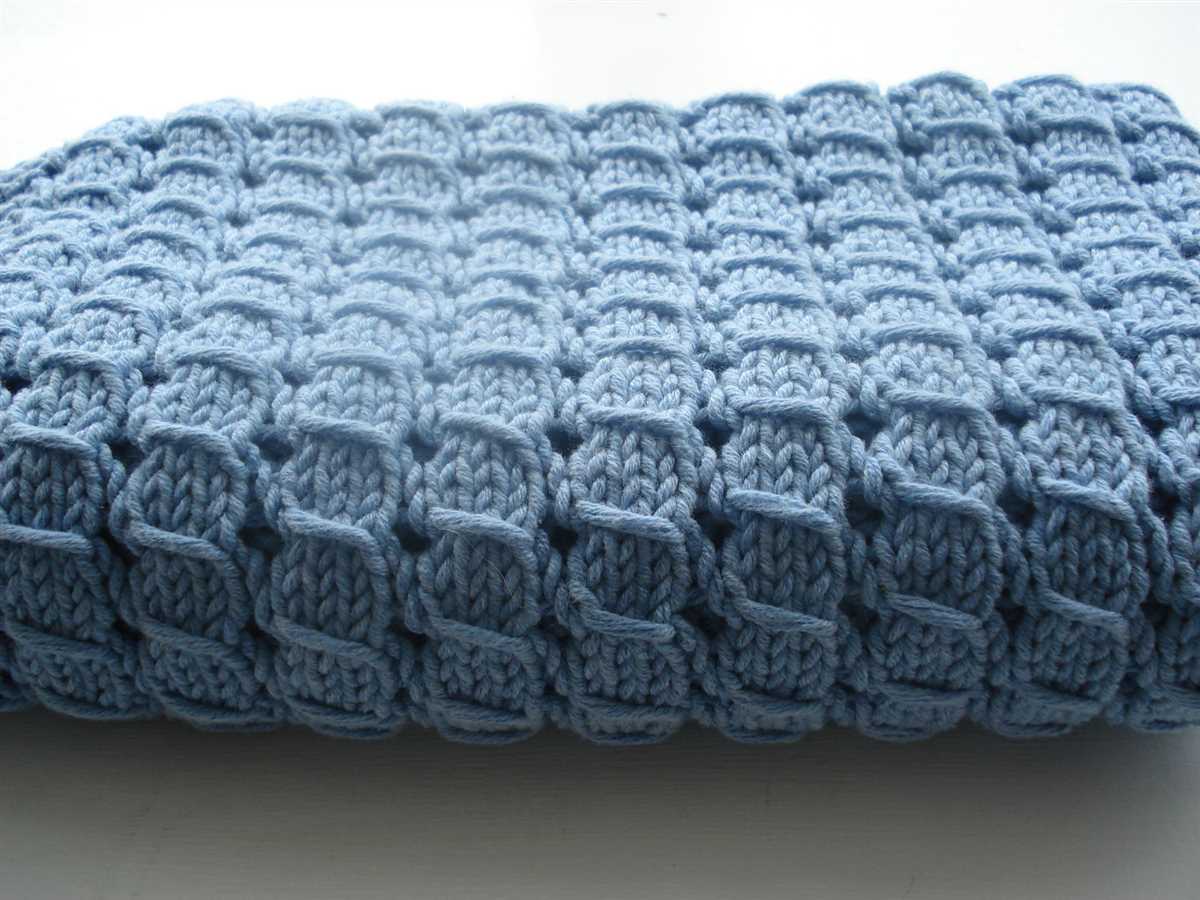
- Use a smooth and even yarn to enhance the definition of the waffle pattern.
- Pay attention to your tension while knitting to ensure a consistent texture throughout your project.
- Practice the waffle stitch on a swatch before starting a larger project to familiarize yourself with the pattern.
- Experiment with different needle sizes to achieve the desired texture and drape for your project.
- Have fun and get creative with the waffle pattern by adding your own personal touch or incorporating it into unique knitting projects.
Techniques for Waffle Pattern Knitting
Waffle pattern knitting is a popular technique that creates a textured, honeycomb-like design. It adds depth and visual interest to various knitting projects such as blankets, scarves, and sweaters. In this article, we will explore some techniques and tips for knitting the waffle pattern.
Choosing the Right Yarn
When knitting the waffle pattern, it is important to select the right yarn for your project. Yarns with good stitch definition, such as worsted weight or chunky yarns, work best for showcasing the texture of the waffle stitch. You can experiment with different yarn types and fibers to achieve the desired result. Additionally, using a solid or slightly variegated yarn allows the waffle pattern to stand out more clearly.
Understanding the Stitch Pattern
The waffle pattern consists of a combination of knit and purl stitches, creating a series of raised squares. The basic stitch pattern typically involves knitting two stitches together, then purling the next two stitches. This pattern is repeated across the row and on subsequent rows to create the waffle effect. Understanding the repeat pattern and practicing it can help you maintain consistency and accuracy throughout your knitting project.
To achieve a more pronounced waffle texture, you can also experiment with variations of the stitch pattern. For example, you can try adding increases or decreases within the squares to create a more intricate design. It’s important to stay attentive to the pattern instructions and count your stitches to ensure the desired effect is achieved.
Blocking and Finishing
Once you have completed your waffle pattern knitting, blocking is an essential step to enhance the texture and drape of your project. Blocking involves gently washing and shaping the knitted piece to relax the fibers and even out the stitches. This process helps the waffle pattern to fully bloom and creates a professional-looking finish.
Before blocking, check the care instructions for your yarn and follow them accordingly. Some yarns may require hand washing, while others can withstand gentle machine washing. After blocking, make sure to dry your project completely before storing or wearing it.
Overall, knitting the waffle pattern can add a touch of elegance and sophistication to your projects. By selecting the right yarn, understanding the stitch pattern, and finishing with blocking, you can create beautiful and textured pieces that are sure to impress.
Variations of waffle pattern knitting
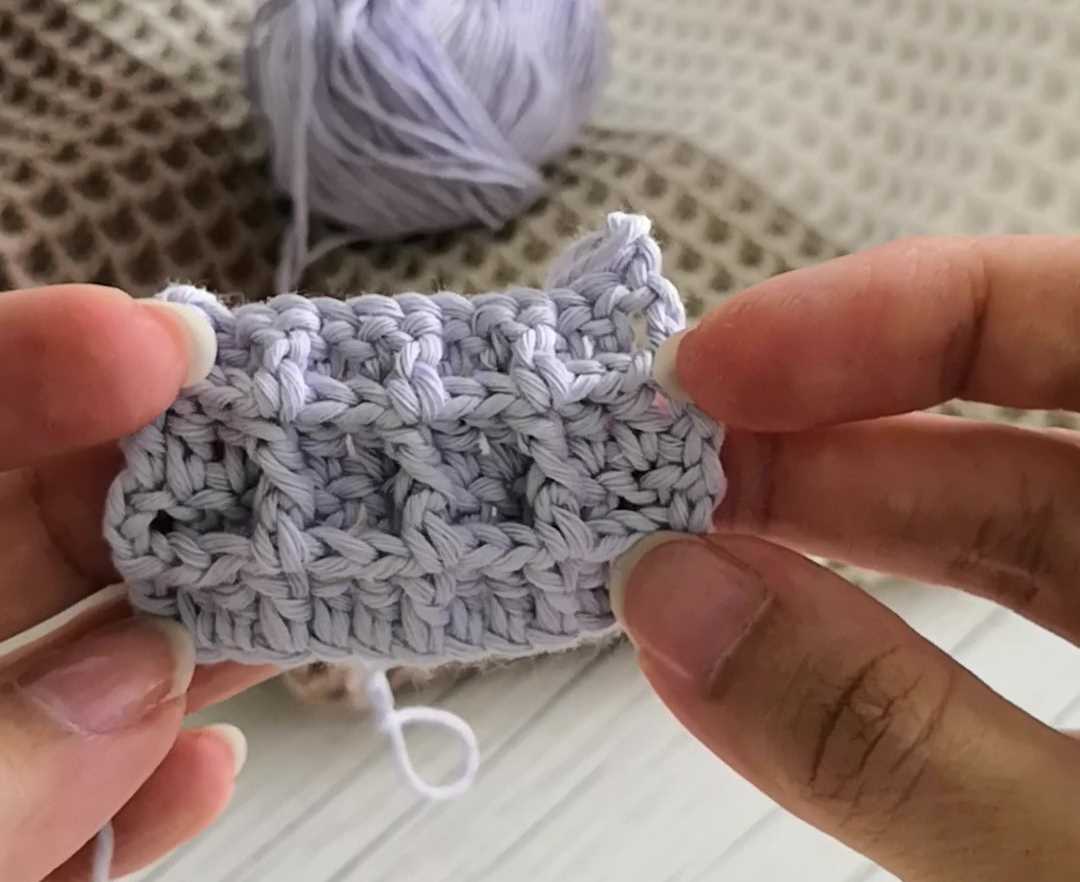
The waffle pattern is a popular choice for knitters looking to add texture to their projects. It creates a unique raised square design that resembles the pattern on a waffle. However, there are several variations of the waffle pattern that allow knitters to customize their projects and add their own personal touch.
One variation of the waffle pattern is the honeycomb stitch. This stitch creates a similar texture to the waffle pattern, but with a slightly different design. Instead of the raised square pattern, the honeycomb stitch creates a more rounded and organic honeycomb-like pattern. This variation can be used to add a softer texture to blankets, scarves, or hats.
Another variation of the waffle pattern is the twisted rib stitch. This stitch combines the waffle pattern with a twisted rib stitch, which creates an interesting twisted effect. The twisted rib stitch is made by knitting through the back loop of the stitch instead of the front, which creates a twisted look. Combining this with the waffle pattern adds an extra layer of texture and complexity to the design, making it perfect for more advanced projects.
If you’re looking for a simpler variation of the waffle pattern, you can try the mini waffle stitch. This stitch creates a smaller version of the traditional waffle pattern, with smaller raised squares. The mini waffle stitch is perfect for adding subtle texture to smaller projects like dishcloths or baby booties.
These are just a few examples of the variations of the waffle pattern knitting. With some creativity and experimentation, you can create your own unique variations by combining the waffle pattern with other stitch patterns or adjusting the size and spacing of the raised squares. The possibilities are endless, and the waffle pattern can be a versatile and fun design element to incorporate into your knitting projects.
Tips for Choosing the Right Yarn for Waffle Pattern Knitting
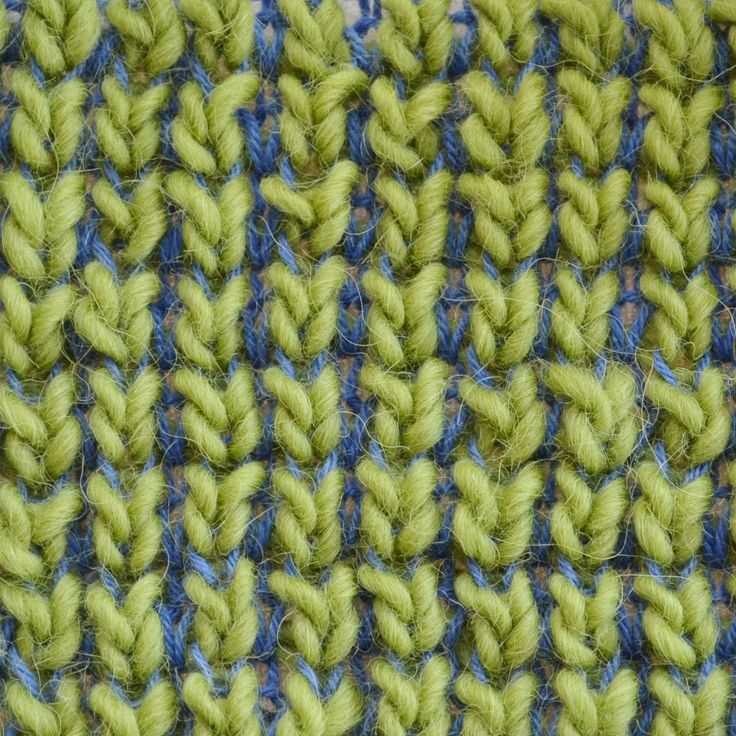
When it comes to waffle pattern knitting, selecting the right yarn is crucial to achieving the desired texture and drape for your project. Here are some helpful tips to keep in mind when choosing yarn for your waffle pattern knitting:
Consider the Fiber Content
One of the first things to consider when choosing yarn for waffle pattern knitting is the fiber content. Different fibers can create different effects and textures in your finished project. For a classic waffle pattern with good stitch definition, consider using a yarn with a high percentage of wool. Wool fibers have natural elasticity and bounce, which will enhance the texture of the waffle stitch pattern.
If you prefer a softer and more lightweight result, you can opt for a yarn blend that includes fibers like alpaca or cashmere. These luxurious fibers can add drape and a lovely halo effect to your waffle pattern.
Choose the Right Weight
The weight of the yarn you choose will determine the final size and thickness of your waffle pattern fabric. For a cozy and chunky waffle effect, consider using bulky or super bulky weight yarns. These thicker yarns will create a more pronounced waffle texture.
On the other hand, if you want a lighter and more delicate waffle pattern, you can choose a DK or sport weight yarn. These lighter weight yarns will result in a less pronounced waffle effect, but can still showcase the pattern beautifully.
Experiment with Color
While the waffle stitch pattern itself is already visually interesting, you can enhance its appeal by choosing the right color. Solid, semi-solid, or tonal yarns can showcase the texture of the waffle pattern and create a classic and sophisticated look.
Alternatively, variegated or self-striping yarns can add an element of fun and playfulness to your waffle pattern. The color changes in the yarn can create interesting visual effects as the waffle pattern emerges.
Remember, the most important thing is to choose a yarn that you love and enjoy working with. Experimenting with different yarns can help you discover the perfect combination of fiber, weight, and color for your waffle pattern knitting projects.
Step-by-Step Guide to Knitting Waffle Pattern
Knitting the waffle pattern is a great way to add texture and visual interest to your knitting projects. The waffle pattern creates a lovely honeycomb-like design that is both cozy and visually appealing. Whether you’re a beginner or an experienced knitter, this step-by-step guide will walk you through the process of knitting the waffle pattern.
Materials You Will Need
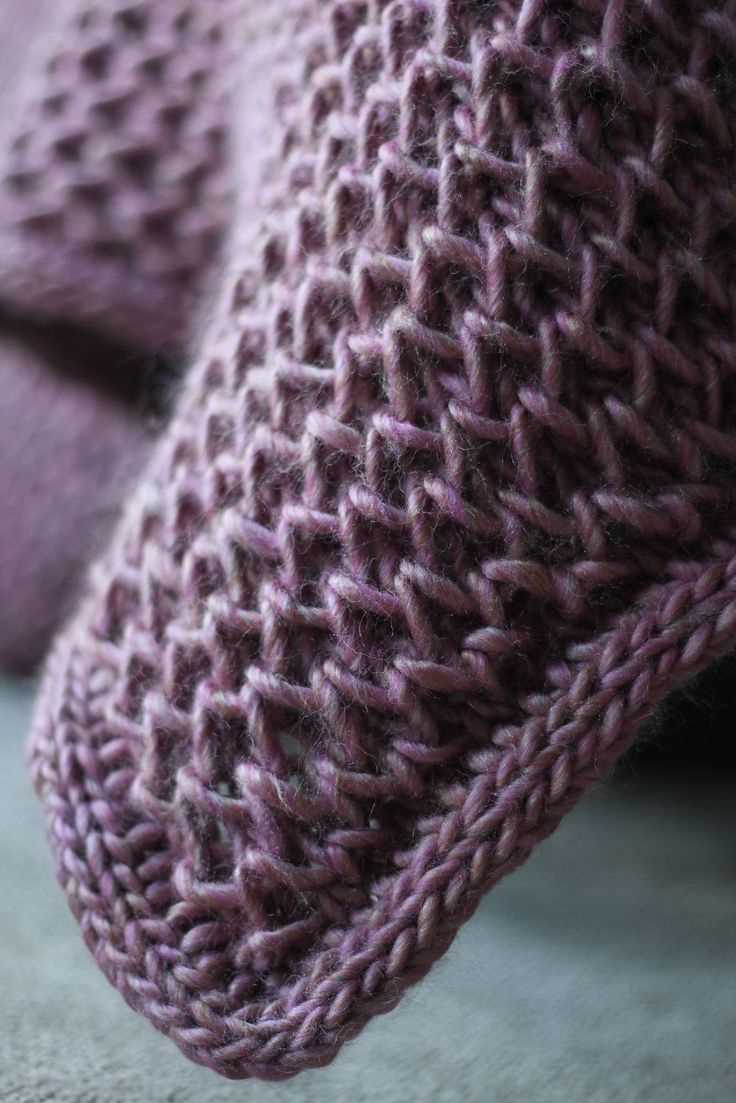
- Yarn: Choose a yarn that is appropriate for your knitting project. The waffle pattern looks great in any type of yarn, but a medium weight yarn will work best.
- Knitting Needles: Select a pair of knitting needles that are appropriate for your yarn. The size of the needles will depend on the yarn weight and the desired finished size of your project.
- Tapestry Needle: You’ll need a tapestry needle for weaving in the ends of your yarn.
Step 1: Cast On
Begin by casting on the desired number of stitches for your project. Make sure to leave a long tail of yarn for weaving in the ends later. The waffle pattern is worked over a multiple of four stitches, so choose a number that is divisible by four.
Step 2: Knit the Base Rows
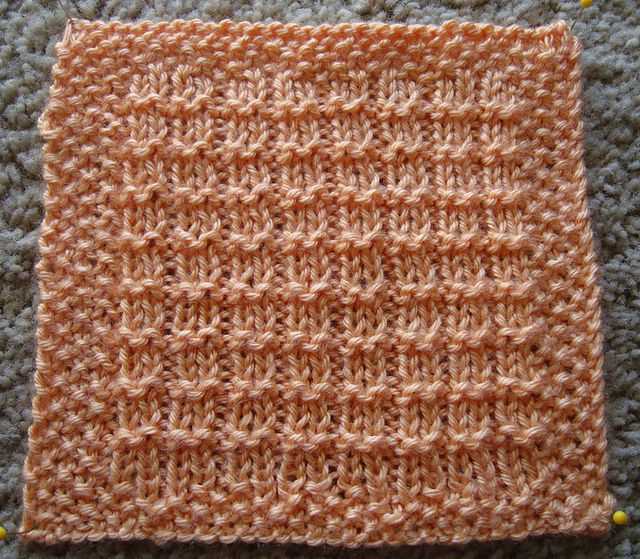
Start by knitting the first few rows in stockinette stitch. This will create a smooth base for the waffle pattern. Simply knit all stitches on the right side and purl all stitches on the wrong side.
Step 3: Begin the Waffle Pattern Repeat
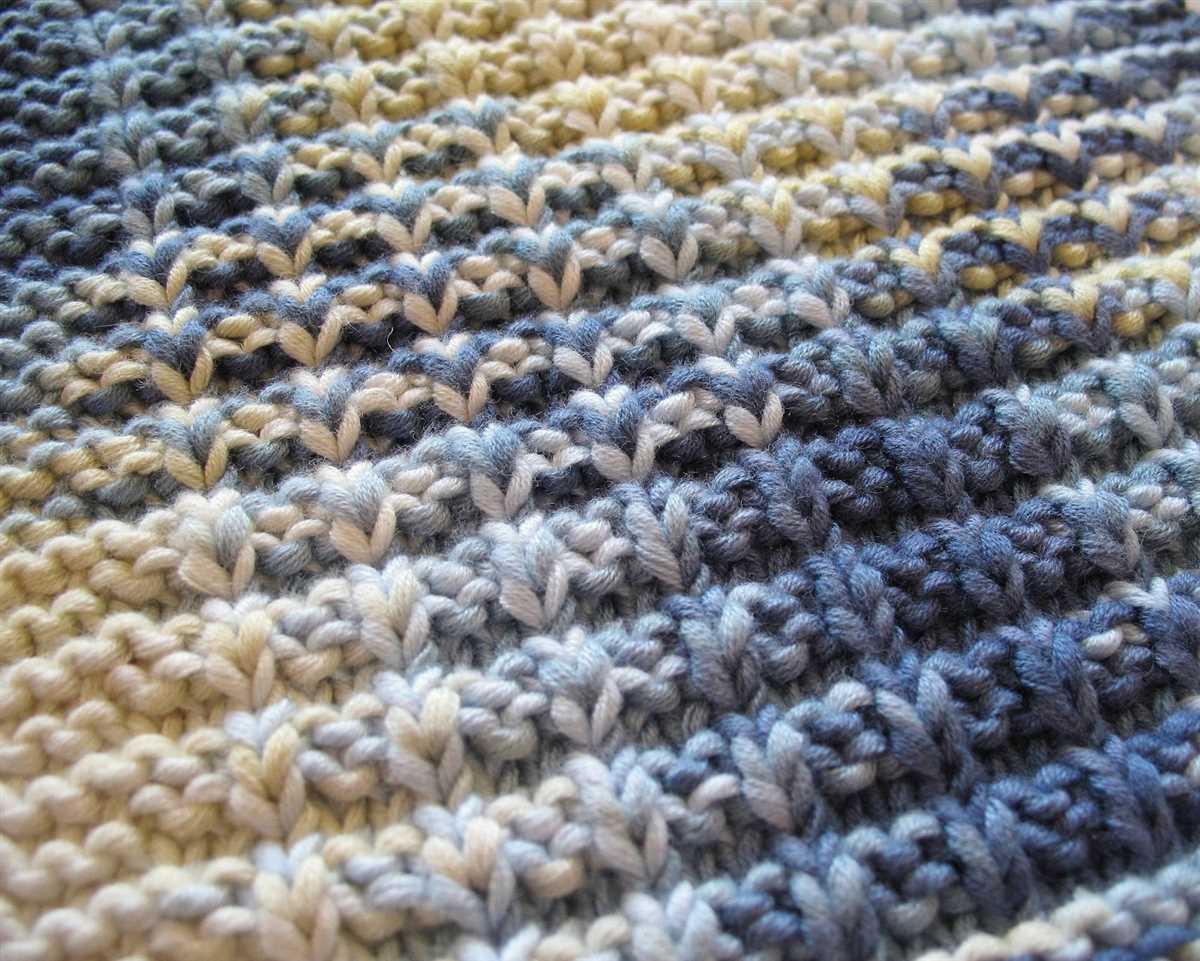
Once you have completed the base rows, you are ready to start the waffle pattern repeat. The repeat consists of a four-row sequence:
- Row 1: *Knit 2, purl 2* – repeat from * to * until the end of the row.
- Row 2: Knit all stitches.
- Row 3: *Purl 2, knit 2* – repeat from * to * until the end of the row.
- Row 4: Knit all stitches.
Step 4: Repeat the Waffle Pattern
Continue repeating the four-row sequence until you have reached the desired length of your project. The waffle pattern is easily memorized, making it a great choice for repetitive knitting.
Step 5: Bind Off
When you’re ready to finish your project, bind off all stitches in pattern. Cut the yarn, leaving a long tail for weaving in the ends. Use a tapestry needle to weave in the ends, making sure to secure them tightly.
Congratulations! You have successfully knitted the waffle pattern. Now you can admire your textured masterpiece and enjoy the cozy warmth it brings.
Common Mistakes to Avoid When Knitting Waffle Pattern
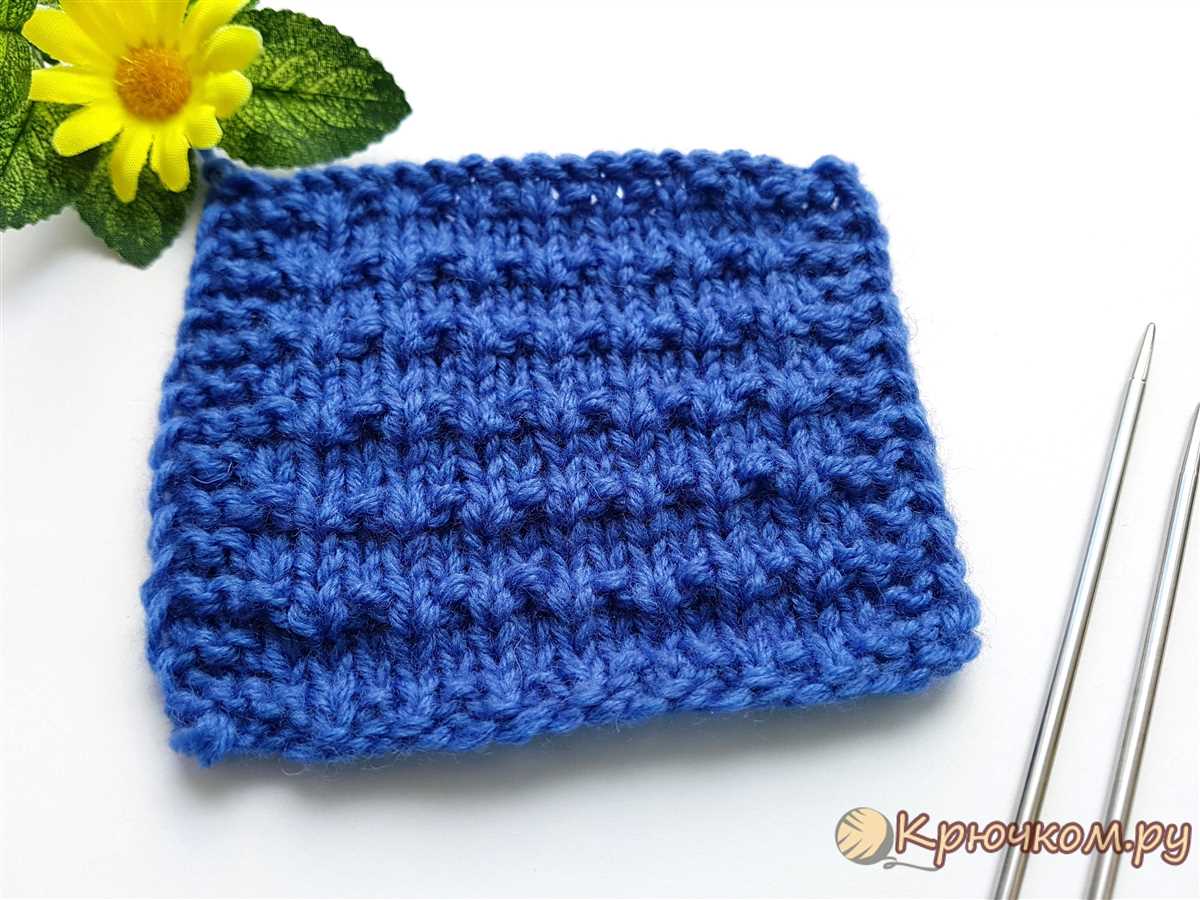
Knitting the waffle pattern can be a fun and creative project, but it’s important to be aware of common mistakes that can easily happen. By avoiding these mistakes, you can ensure that your waffle pattern turns out beautifully and that your finished garment or accessory showcases the wonderful texture of this stitch.
1. Not using the right yarn: The waffle pattern looks best when knit with a yarn that has good stitch definition. Avoid using fuzzy or textured yarns that may obscure the pattern. Choose a yarn that is smooth and has a good amount of drape.
2. Not swatching: Swatching is a crucial step in knitting any pattern, and the waffle pattern is no exception. Be sure to knit a swatch before starting your project to determine the right needle size and ensure that your tension is correct. This will help you achieve the desired look and fit of your finished piece.
3. Not counting stitches: The waffle pattern often involves repeating a series of stitches over a set number of rows. It’s important to carefully count your stitches after each row or round to ensure that you haven’t accidentally added or dropped any stitches. This will help maintain the integrity of the pattern and prevent any gaps or inconsistencies.
4. Not blocking: Blocking is the process of shaping and finishing your knitted piece. It helps even out stitches, improve drape, and enhance the overall appearance of the waffle pattern. Don’t skip this step, as it can make a big difference in the final result of your project.
5. Not following the pattern instructions: Each waffle pattern may have slightly different instructions and stitch counts. It’s important to carefully read and follow the pattern instructions to achieve the desired outcome. Pay attention to any special techniques or stitches that may be involved in the pattern.
6. Not being patient: Knitting the waffle pattern can be time-consuming, especially if it involves intricate stitch combinations and repeats. It’s important to be patient and take your time with each row or round. Rushing through the process can lead to mistakes and frustration.
By avoiding these common mistakes and taking the time to properly execute the waffle pattern, you can create beautiful and visually stunning knitted pieces that showcase the unique texture of this stitch. Happy knitting!
Inspiration and Ideas for Waffle Pattern Knitting Projects
Waffle pattern knitting is a versatile and beautiful technique that can be used to create a variety of projects. Whether you’re a beginner or an experienced knitter, the waffle pattern offers endless possibilities for creativity. In this article, we’ve explored some of the most popular waffle pattern knitting projects and provided inspiration for your next knitting endeavor.
From cozy blankets and scarves to stylish sweaters and hats, there are countless ways to incorporate the waffle pattern into your knitting projects. The textured design of the waffle pattern adds depth and interest to any item, making it a great choice for both functional and decorative pieces. Whether you prefer simple, monochromatic designs or bold, colorful patterns, the waffle stitch can be adapted to suit your personal style.
Blankets and Throws
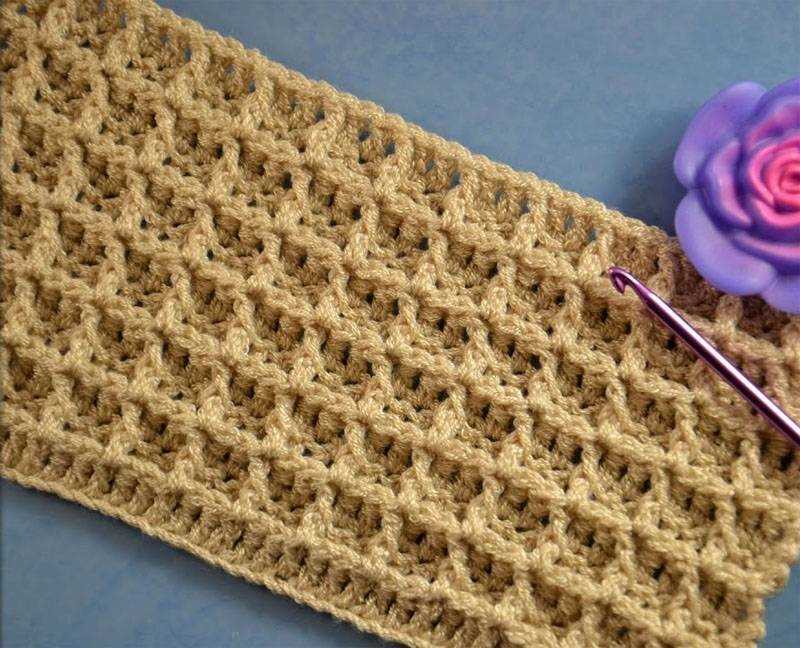
One of the most popular uses for the waffle pattern is in blankets and throws. The thick and cozy texture created by the waffle stitch makes it perfect for snuggling up on a chilly day. Consider using a neutral color palette for a classic and timeless look, or experiment with different shades and yarn weights to create a modern and unique design.
Scarves and Cowls
Another popular project for the waffle pattern is scarves and cowls. The textured design adds visual interest to these accessories and provides extra warmth and insulation. Choose a soft and warm yarn, such as wool or alpaca, for a luxurious feel. Experiment with different lengths and widths to create the perfect accessory for your winter wardrobe.
Sweaters and Cardigans
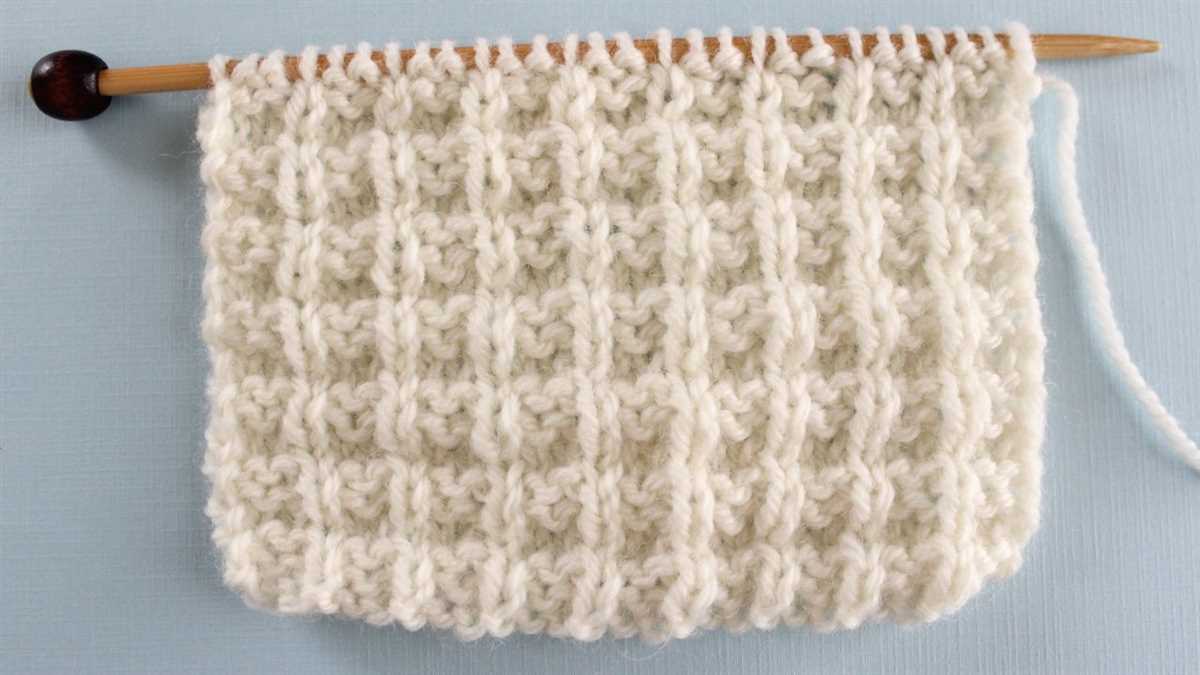
If you’re looking to add some texture to your wardrobe, consider using the waffle pattern in sweaters and cardigans. The combination of the waffle pattern and a cozy yarn creates a comfortable and stylish garment. Opt for a chunky yarn and oversized silhouette for a trendy and relaxed look, or choose a finer yarn and a fitted shape for a more classic and elegant style.
Hats and Headbands
Add a touch of texture to your winter accessories with waffle pattern hats and headbands. The waffle stitch adds visual interest and extra warmth to these accessories, making them both functional and fashionable. Experiment with different color combinations and yarn weights to create unique and personalized pieces.
Overall, the waffle pattern offers endless inspiration and ideas for your knitting projects. Whether you choose to knit a cozy blanket, a stylish sweater, or a trendy hat, the waffle stitch will add beautiful texture and interest to your creations. With its versatility and timeless appeal, the waffle pattern is sure to become a favorite technique in your knitting repertoire.
Q&A:
What is a waffle pattern in knitting?
A waffle pattern in knitting is a stitch pattern that creates a fabric that resembles the texture of a waffle. It typically consists of alternating knit and purl stitches in a specific sequence to create the waffle-like effect.
How do you knit a waffle pattern?
To knit a waffle pattern, you need to follow a sequence of knit and purl stitches. Start by knitting two stitches, then purling two stitches, and repeating this sequence across the row. On the next row, you will purl the knit stitches and knit the purl stitches to create the waffle texture. Repeat these two rows until you achieve the desired length.
What can you make using the waffle pattern?
The waffle pattern can be used to create various knitting projects such as scarves, blankets, dishcloths, and even garments like sweaters or cardigans. It adds both visual interest and texture to the finished piece.
Are there variations of the waffle pattern?
Yes, there are variations of the waffle pattern. Some variations include using different stitch combinations, adding cables or lace elements, or changing the size of the waffle squares. These variations allow knitters to customize the pattern according to their preferences and create unique designs.
Is the waffle pattern suitable for beginners?
Yes, the waffle pattern can be suitable for beginners. It mainly involves basic knit and purl stitches, making it a great pattern for knitters who are new to knitting. The repetitive nature of the pattern also helps beginners practice their stitching skills while creating a visually appealing texture.
What is waffle pattern knitting?
Waffle pattern knitting is a type of stitch pattern that creates a textured fabric with a repeating square pattern resembling a waffle grid.